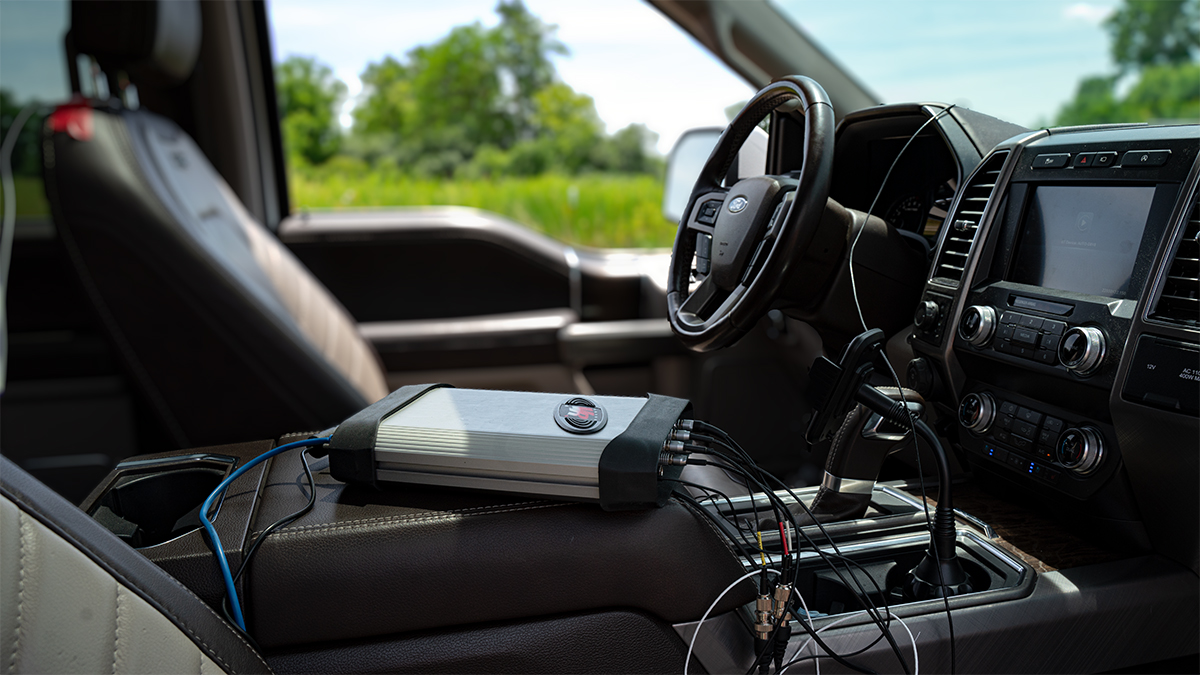It can be difficult to deviate from actions that an industry has always done in a certain way. For instance, the vibration testing industry relies on standards to develop test profiles, even if some do not represent the operational environment well. Test standards can omit potentially damaging peaks or over-test the product, leading to over-design.
While standards are often necessary for due diligence, engineers can improve their test profiles with field-recorded data. This task is particularly relevant for emerging technologies such as electrification, where tests are not yet standardized.

Field-recorded Data
Data from the field offers a realistic look into a product’s operational environment. A test profile that is as close to the end-use environment as possible leads to an efficient testing process and a quality product.
For example, imagine that engineers identified a potential failure attributed to vibration, but the testing did not represent conditions over the design life of the product. The manufacturer would spend time and money on a redesign and, potentially, a recall.
To understand this idea further, let’s consider a test engineer’s four potential test results.
True Pass
Manufacturers and other organizations write test specifications as “success run” reliability demonstrations, so a test is useless if it misses failure modes. As such, high-fidelity data that correlates to the operational environment is essential. (Vibration test specifications are often written as “success run” so suppliers can predict cost and timing, although test-to-failure methodologies are more useful in many respects.)
True Fail
There is often significant organizational pushback when engineers identify test failures. With irrefutable recorded data to correlate the operational environment and established test acceleration methodologies, an engineer should have no problem convincing an organization that a design change is necessary to avert future issues.
False Pass
A false pass is never good but occurs regularly. It leads to product recalls, warranty costs, liability, and harm to reputation. Fortunately, they are less common when a test has quality specifications from the start, including good field data and sound methods for test development.
When a false pass does occur, field data applied competently to test development can:
- Provide a defense for the manufacturer and reduce damages awarded to plaintiffs
- Reveal the deficiencies of the original test, approve the revised design, and resolve the recall issue
False Fail
A false failure leads to scrapping or reworking costly prototypes, resulting in loss of time, unnecessary investigations and design changes, and additional testing costs. It occurs often and is obvious when the engineer gathers data at the outset of product development and processes it into a field-correlated accelerated test.
Field-to-test Guidelines
The field-to-test process combines appropriate acceleration models with knowledge of the stress and usage conditions in the field.
Designing a test plan that simulates the product’s operational field should include the following steps:
- Evaluate the stress level and the usage profile for the field environment
- Select the appropriate acceleration model(s) for the test based on the expected failure mechanism
- Define the appropriate stress level and test duration based on the test equipment’s capabilities and the maximum allowable stress level to avoid “foolish” failures
- Calculate the acceleration factor and duration of the test based on the field stress level and the environmental exposure time for lifetime operation
- Use a sampling plan derived from stress/strength interference principles
How Does VR Make It Easy?

Gathering field data is not complicated when you have the right equipment. The ObserVR1000 is a portable data acquisition system that allows engineers to record and analyze data quickly. It does not require a power source or a laptop, as it is compatible with the VR Mobile application.
After recording, the ObserVIEW analysis software is an intuitive program that handles large data files seamlessly. Its graphics make it easy to understand data and includes convenient features like copy-and-paste and embedded tips/help.
The ObserVR1000 can save time and reduce product development costs. A Ph.D. is not necessary to record data and develop tests confidently.
Why Use Field-recorded Data to Develop a Test Profile?
In the end, understanding the operational environment and using recorded data to develop a correlated test is faster and costs less. Remember: bad testing is not testing! Upfront knowledge of failure modes and mechanisms with objective pass/fail criteria is essential. Using quality field-recorded data to develop a customer-correlated test mitigates risk and minimizes the probability of issues down the road.
